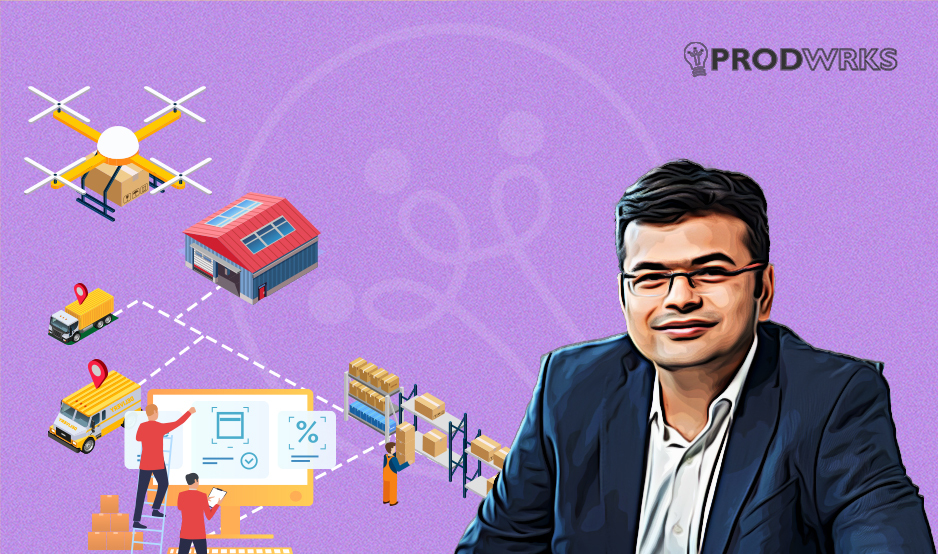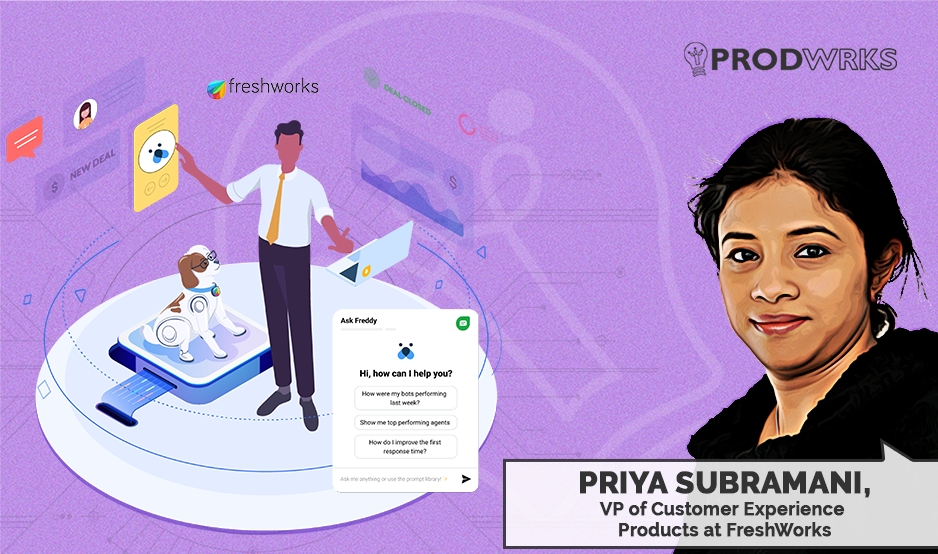
Spending on logistics has always been a nightmare for enterprise companies, and the lack of visibility on the location or the state of goods in transit has been a major pain point. Sanket Sheth, the founder of Elixia Tech, gives a solution to these enterprise problems with his advanced suite of SaaS products for logistics and supply chain digitalization.
Founded in 2011 with a clear focus on solving for visibility and reducing ‘cost per kg’ for its customers, Elixia’s suite of 12 interconnected SaaS solutions has successfully enabled 16 million plus deliveries so far in their product lifecycle, and they are poised to achieve 10 million deliveries just in this fiscal year.
With customers like Flipkart, Mondelez (Cadbury), and Ferrero using Elixia, we can safely say that Elixia is the Zoho of the supply chain and logistics industry. We reached out to Sanket to understand the nuances of running and scaling a SaaS logistics platform such as Elixia, and he shares his journey, lessons, and insights in this story.
Solving Logistics Nighmares for Enterprises
Before starting EIixia in 2011, Sanketh was a tech lead in a US-based startup and developed AI-ML programs in the logistics space. He realized his true calling of using technology to shape the unstructured logistics industry in India and give decision-makers in enterprises control over their goods in transit. So, he flew back home to Mumbai, at age 23 to start Elixia.
“In enterprise companies, logistics is the last thing people think of when it comes to digitalization. It is a cost centre and doesn’t contribute directly towards revenue growth. So, spending on logistics was always a nightmare for enterprises. I decided to do something about it and reduce the cost of goods in transit and bring visibility so that there is effectiveness in the journey,” says Sanket.
In the initial years, Sanket set about to solve the problem of visibility in logistics and started gathering feedback from supply chain heads of enterprises to understand their problems.
Sanketh says, “Handling supply chain and logistics was very chaotic in enterprises with a lot of shouting on the phone. The supply chain managers did not really know where the goods were, whether the material was loaded or unloaded, or whether material integrity was intact. There were shortages, damages, and sometimes excess items were shipped.”
Sanket’s solution to solve this visibility problem was to bring intelligence based on data captured through GPS devices installed in transport vehicles. He built real-time data monitoring for the vehicles transporting goods for enterprises and ran analytics against the data generated by the GPS devices.
Sanketh did all this at a time when GPS devices were fairly new in the Indian market. This early solution was called The Control Tower. It was a solid decision-making and visibility platform for the supply chain managers to know the status of goods in transit. Control Tower found product-market fit as soon as it launched in 2014.
“Control Tower eliminated the role of control room executive in enterprises. The system does real-time tracking, estimates arrival time, sends alerts when vehicles carrying the goods are idle, and so on. A bit of machine learning is involved, where it takes necessary actions to help decision-making,” explains Sanket.
At the time, Sanket was among the first people to use GPS telematics in India. Elixia’s early GPS tech-based intervention brought clarity to the mix and ensured peace of mind for the logistics managers in the enterprise.
Scaling Elixia - Building Trust with First Customers
Elixia launched Control Tower in 2014, and its success set off a spark. Sanketh started thinking about the value addition of plug-and-play SaaS solutions in solving problems in the entire ecosystem of supply chain and logistics, and not just visibility.
“I realized that visibility should not be the only thing I should focus on because that's not reducing costs directly. I started interacting with supply chain heads of my customers like Mondelez, Nestle, Ferrero, and Hershey's. I started solving for pain points that are more or less the same across segments like FMCG, pharma, or any manufacturing company or shipper.”
Sanketh underscores the support of his first customers here and how their feedback helped them scale from one solution in 2014 to a suite of 12 SaaS solutions by 2023.
“The startup culture is pretty chaotic, but if customers are supportive, it helps startups grow fast. Monginis, a cake manufacturing company, was one of Elixia’s first few customers. They were very supportive and gave us a lot of chances. Monginis helped Elixia get a foothold in the digitalization of cold chain monitoring while transporting food items.”
Soon after Monginis, Mondelez (Cadbury) also started using Elixia’s solution to monitor refrigerated vehicles and helped them gain inroads into the FMCG market. Mondelez uses Elixia to monitor the temperature of chocolates like Dairy Milk and Five Star while in transit from the factory to other destinations. Elixia sends alerts and temperature compliance reports to customers if there is a temperature conflict, thereby preventing food loss.
“Realizing that this solution can be our USP enabled Elixia to become one of the leaders in the cold chain monitoring industry today in India. With Mondelez we penetrated the FMCG market and started cracking deals with other chocolate companies and even other manufacturing companies. Pidilite, Schneider Electric, and Shell use Elixia now. But it all started with Monginis, who gave us this opportunity to explore and scale to a suite of 12 products.”
For SaaS startups who want to scale and scale rapidly, Sanket has an important message, “The customers define the product and the process.”
Lessons from Scaling a SaaS Business
Product-focused vs. customer-focused development
Sanket says that Elixia initially were not product-focused and used to do customizations for customers based on ad-hoc requests, which was “not a good idea.”
“When you are starting up, you build a product by getting requirements from customers, and we used to do it for specific customers. But for scaling, you have to be product-focused and queue features for development. We let customers know when things go live rather than them defining when it should go live. There is a road map which is built for the next ten months so that the product evolves and becomes stronger for all customers, and we release value adds (updates) every 15 days.”
Sanket clarified that they still don’t say no to individual customer feedback but rather take their suggestions for enhancements and change requests, see if they fit the majority’s requirements, and prioritize based on that.
The Art of Saying “No”
Sanket says that for a product-focused company, the lighter they are, the easier it is to scale. So Elixia concentrates on its core strength of providing logistics solutions only for transportation via road and not for air, ship, or rail transportation.
“If someone wants a WMS (warehouse management system), for instance, we directly say no to them. We are into digitalizing transport management. We do not do anything beyond this. The lighter or more focused you are with products, the faster you scale. So if a customer comes to us with a request for customization, or asks us a special solution, we say no. But we would do it if there is a commonality of the problem among other customers.”
Continuous Evolution for higher CSAT
Today, Elixia has a suite of products catering to the different customers in the logistics and supply chain space with high CSAT scores. Sanket says the secret to customer satisfaction is to evolve the products continuously.
“Evolution doesn’t mean extending the product portfolio. Today, we have a suite of products that will continuously evolve as we discover newer pain points that we need to solve by interacting with supply chain professionals. No one would want to live with the same problems or experience. We have to realize what customers want on a daily basis, what they see in your product, and how they want to play around with the system and gain value out of it. Start by understanding these things.”
Importance of Scalable Architecture
In the early days, Elixia operated on a monolithic architecture suitable for serving a limited number of customers. However, as the customer base grew, Sanket faced issues in latency and performance. Recognizing the need for change, Sanket transitioned Elixia to a microservices architecture.
“I figured that the front end and back end should be different, and there has to be a business layer in between. I started investing more in product scalability and ensured that the product was scalable and had scalable servers. I wanted to ensure the architecture was strong enough to support 20,000 customers and started working towards it. Since then, I have seen zero downtime and no latency, and global customers are using it.”
This shift was crucial in maintaining Elixia’s competitive edge and providing an effective platform for its users.
Elixia's USP and Why Logistics Has No Monopoly
Sanket highlighted a crucial aspect of the logistics industry: there is no single end-to-end provider for digitalizing logistics operations. This absence of a monopoly arises due to the complexity of the logistics sector, which encompasses multiple segments and industries.
“Logistics is very complex. There are imports, there are exports, there are first-mile pickups, there are last-mile deliveries, there are mid-mile movements, and there is distribution. So you can be good in one logistics segment, but it's very difficult to build a configurable product catering to all logistics segments.”
Therein lies the USP of Elixia, which is highly configurable and serves multiple logistics segments with its microservices architecture.
“We have made it modularized and microservices driven so that we can do plug and play and cater to almost all segments of logistics and serve all industries. My solution is industry-agnostic and logistics segment-agnostic. That's why you see very few players like Elixia. Others typically focus on a specific geography or a product. But there is no end-to-end transport management provider as a whole. So, I believe we stand slightly different and stronger than others.”
But Sanket admits that some prominent competitors in the space, including names like Pando, FreightTiger, Project 44, and Four Kites, are making significant strides in the logistics digitalization domain.
“During Elixia's early years, until 2016, competition was scarce, with only a few players and even fewer strong ones in the market. But from 2019 onwards, I started seeing good competition and it’s a good thing. The more the competition, the more awareness it brings, which helps my sales. Plus, the market is huge, and there is space for everyone.”
Sanket surmises that the logistics market is vast enough to accommodate multiple players. Keeping an eye on these competitors has helped Elixia stay informed about industry trends and adapt accordingly. This means customer acquisition is a key focus for Elixia, as the market has room for growth.
Adapting to Emerging Trends
Elixia now plans for future product portfolio expansion, including a focus on global visibility extensions. However, one of the most exciting developments Sanket mentioned was the introduction of GenAI into the mix.
Instead of manually generating reports or analyzing data, customers could simply ask questions in plain English. GenAI would provide immediate answers based on the extensive data and transaction records on the platform.
“It could be any question. The system has all the transactions, customer touchpoints, and timestamps. No one would even need to open a dashboard for information anymore. This is something which we are focused on when it comes to product portfolio expansion.”
Sanket strongly believes that this innovative feature will simplify decision-making, enhance user experience, and further differentiate Elixia in the market.
Measuring Success
When measuring success and performance, Sanket identified the “number of deliveries” as Elixia’s Northstar metric. He explained that Elixia charged its customers based on the number of deliveries rather than the number of customers. This metric was central to tracking revenue generation for the platform.
“In 2019 and 2020, we enabled 250,000 deliveries a year. We got our first million deliveries in a calendar year in 2021. Last year, in 2022, we did 4.2 million deliveries, and this year, we have already crossed about six million deliveries, and we are targeting 10 to 12 million by the end of this fiscal year. That's the growth plan. The more deliveries we enable through our platform, the more savings we do for our customers with regards to carbon emission footprint.”
Sanket also emphasized that this metric was closely tied to Elixia’s sustainability efforts. By optimizing deliveries and reducing carbon emissions through efficient route planning, Elixia contributed to sustainability goals, making it an essential part of its value proposition.
Reasons for Elixia's Growth - Customer Acquisition and Retention Strategy
Sanket attributed Elixia’s growth to a combination of factors, with customer retention playing a significant role.
“One of the biggest reasons for Elixia’s success is retaining customers. There are a lot who focus on new customers and onboard new customers very easily. But they forget about existing customers. We don't. The customers who are with me will stay with me for a long time, helping me attain these delivery numbers.”
Elixia employs a robust go-to-market (GTM) strategy for customer acquisition, which consists of four main components:
Hunting: Elixia actively participates in supply chain events, sponsored industry gatherings, and engages directly with supply chain heads. This approach allows them to showcase their platform’s value and generate marketing-qualified leads (MQLs).
Farming: After onboarding a customer, Elixia aims to expand its services within the account. They encourage customers to use the platform for multiple logistics segments, products, geographies, and industries. This approach effectively increases existing clients’ average contract value (ACV).
Reseller Partnerships: Elixia leverages reseller partnerships to filter and facilitate sales. Outsourcing pre-sales activities to reseller partners helps streamline deal conversion and accelerate growth.
Strategic Partnerships: Collaborative relationships with strategic partners allow Elixia and its partners to generate revenue when a customer signs up with both entities. This “you grow, we grow” model benefits all parties involved.
In summary, Sanket’s reflections provide a comprehensive overview of Elixia’s journey, its competitive landscape, strategies for growth, and the evolving trends in the logistics and supply chain SaaS industry. Elixia’s commitment to innovation and customer-centricity is a testament to its continued success in the market.



